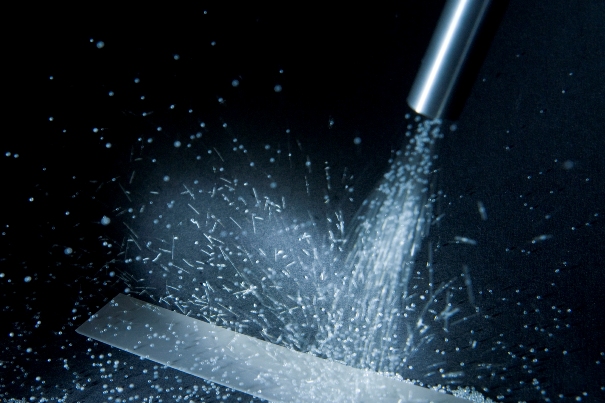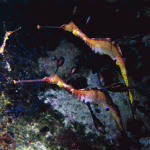
A shot is fired from a blasting gun at a ceramic leaf spring to correct its shape or cause specific warping as desired. Image: Fraunhofer IWM, Felicitas Gemetz
Ceramic could be the next supermaterial.
When it comes to producing new and less expensive leaf springs, lightweight mirrors, membranes for sensors and fuel cells, ceramic plates could be the answer.
Ceramic is a lightweight, rigid, corrosion-resistant material that stands high temperatures, but producing thin ceramics is expensive as it needs to be cut using diamond tools.
German researchers from the Fraunhofer Institutes for Mechanics of Materials IWM in Freibrug and for Production Systems and Design Technology IPK in Berlin have been using shot peening for working with metals, but they were hesitant about using it with ceramics as the material is brittle and shatters easily.
Shot peening is a process in which small pellets are fired at the surface of a component with a blasting gun. The pellets strike the surface and alter the shape of the outermost layer on the material. By calculating the path of each pellet, the researchers were able to determine which size of shot could be suitable for use on thin ceramics.
After shattering some ceramic — all in the name of science, of course — the scientists were finally able shape the thin surface and create light mirrors out of uneven ceramic plates.
The researchers have produced some prototypes, including a concave mirror, and are currently perfecting the technique. Will ceramic be the next supermaterial?






